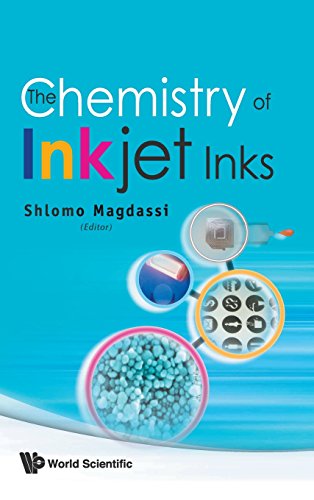The Chemistry of Inkjet Inks download
Par williams justin le vendredi, août 28 2015, 21:47 - Lien permanent
The Chemistry of Inkjet Inks. Magdassi S.

The.Chemistry.of.Inkjet.Inks.pdf
ISBN: 9812818219,9789812818218 | 339 pages | 9 Mb

The Chemistry of Inkjet Inks Magdassi S.
Publisher: WS
An inkjet printer using graphene-based ink developed by researchers could herald a breakthrough in flexible electronics. Ink-jet technology is also used a lot in the chemical and micro-technology world, and most recently has become the foundation for 3D printing technology. Inkjet printers use 4 common colours (some can support up to 9) of CMYK in liquid ink form. Maybe the market's not there, the chemistry too difficult. "Graphene has a unique combination of properties that is ideal for next-generation electronics, including high electrical conductivity, mechanical flexibility, and chemical stability," says Mark Hersam, professor of materials science and engineering at Northwestern's McCormick School of Engineering and Applied Science. The type of ink together with the type of receiving layer will impact the quality of the print. Publisher: World Scientific Publishing Company; Number Of Pages: 356; Publication Date: 2009-07-31; ISBN-10 / ASIN: 9812818219; ISBN-13 / EAN: 978981281821. So we investigated the chemical composition of inkjet inks, both pigment based and dye based inks. A universal highlighter would be great, something that highlights pencil notes on yellow legal paper, inkjet-printed paper, notes written in fountain pen ink, ballpoint, etc. ISBN: 9812818219,9789812818218 | 339 pages | 9 Mb. The.Chemistry.of.Inkjet.Inks.pdf. Pigment based inks have a reactive component and dye based inks do not. Sumitomo Chemical Co Ltd exhibited a light guide plate made with an ink-jet technology at FPD International 2012, which took place from Oct 31 to Nov 2, 2012, in Yokohama, Japan. Download The Chemistry of Inkjet Inks.
Power Electronics: Converters, Applications, and Design pdf